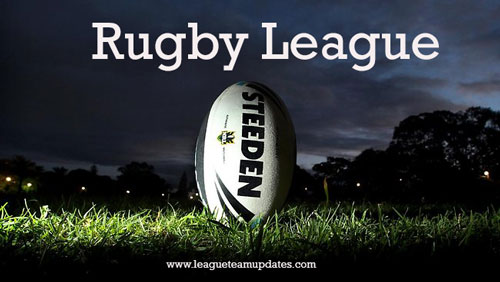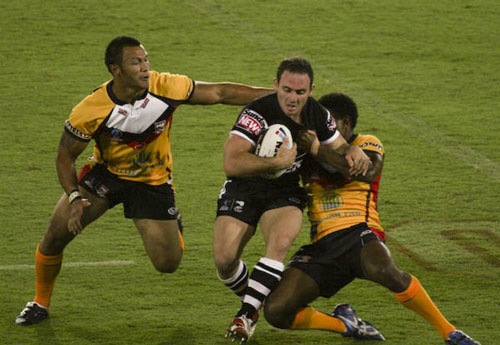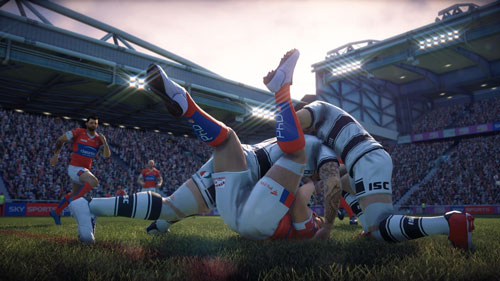
Hello..!! Welcome back to our website. Currently in this article we are providing you information on Rugby League. If you are a fan of rugby then take a look on this article and get the complete details of Rugby league.

About Rugby League
Rugby League football is usually known as rugby league or simply league or rugby thirteen, XIII throughout Europe due to the sports history in the South of France. The nick names of this Rugby League are League, RL. Rugby League is a full contact sport played by 2 teams of 13 players on a rectangular field. The highest governing body of this league is Rugby League International Federation. This Rugby League was founded on September 7, 1895. This Rugby League is originated in Northern England in 1895 as a split from the Rugby Football Union over the issue of payments to players.
In this league, points are scored by carrying the ball and touching it to the ground beyond the opposing team’s goal line, this is called a try, and this is the primary method of scoring. The opposing team attempts to stop the attacking side scoring points by tackling the player carrying the ball. Along with tries, points can be scored by kicking goals. After each try in a match, the scoring team gains a free kick to try at goal with a conversion for further points. The kicks at goal can also be awarded for penalties, and field goals can be attempted at any time.

This league is a popular sport in Northern England, the states of Queensland and New South Wales in Australia, New Zealand, southwest France and it is the national sport of Papua New Guinea. The European Super League and the National Rugby League are the premier club competitions. This league is played internationally, predominantly by European, Australian and pacific Island countries and is governed by the Rugby League International Federation. The 1st Rugby League World Cup was held in France in 1954. Rugby league football takes its name from the bodies that split to create a new form of rugby, distinct from that run by the Rugby Football Unions, in Britain, Australia and New Zealand between 1895 and 1908.
The first of these, the Northern Rugby Football Union, was established in 1895 as a breakaway faction of England’s Rugby Football Union (RFU). Both organizations played the game under the same rules at first, although the Northern Union began to modify rules almost immediately, thus creating a new faster, stronger paced form of rugby football. Similar breakaway factions split from RFU-affiliated unions in Australia and New Zealand in 1907 and 1908, renaming themselves “rugby football leagues” and introducing Northern Union rules. In 1922, the Northern Union also changed its name to the Rugby Football League and thus over time the sport itself became known as rugby league football.
History
In 1895, a split in Rugby football resulted in the formation of the Northern Rugby Football Union (NRFU). As many factors played a part in the split, including the success of working class northern teams. The Northern teams typically had more working class players and they could not afford to play without this compensation.
In 1895, a decree by the RFU banning the playing of rugby at grounds where entrance fees were charged led to twenty-two clubs meeting at the George Hotel, Huddersfield on 29 August 1895 and forming the Northern Rugby Football Union. Within fifteen years of that first meeting in Huddersfield, more than 200 RFU clubs had left to join the rugby revolution.

In 1897, the line-out was destroyed and in 1898 professionalism introduced. In 1906, the Northern Union has changed its rules, reducing teams from 15 to 13 a side replacing the ruck formed after every tackle with the play the ball.
On 5 May 1954 over 100,000 spectators watched the 1953–54 Challenge Cup Final at Odsal Stadium, Bradford, England, setting a new record for attendance at a rugby football match of either code. The first sponsors, Joshua Tetley and John Player, entered the game for the 1971–72 Northern Rugby Football League season.
Laws of Game
The main objective in rugby league is to score more points through tries, goals and field goals (also known as drop goals) than the opposition within the 80 minutes of play. If after two halves of play, each consisting of forty minutes, the two teams are drawing, a draw may be declared, or the game may enter extra time under the golden point rule, depending on the relevant competition’s format.
The try is the most common form of scoring in rugby and a team will usually attempt to score one by running and kicking the ball further up field, or passing from player-to-player in order to man oeuvre around the opposition’s defense. A try involves touching the ball to the ground on or beyond the defending team’s goal-line and is worth four points. A goal is worth two points and may be gained from a conversion or a penalty. A field goal, or drop goal, is only worth one point and is gained by dropping and then kicking the ball on the half volley between the uprights in open play.
Field position is important in rugby league, and it is achieved by running with or kicking the ball. Passing a ball in rugby league is only a backward or sideways direction. The teammates have to remain on-side by not moving ahead of the player with the ball. The ball may be kicked ahead for teammates, but again, if they are in front of the kicker when the ball is kicked, they are deemed off-side. Tackling is another important thing of rugby league play. The player who is holding the ball can tackle. A tackle is complete, for example, when the player is held by one or more opposing players in such a manner that he can make no further progress and cannot part with the ball, or when the player is held by one or more opposing players and the ball or the hand or arm holding the ball comes into contact with the ground. The attacking team in rugby gets a maximum of six tackles to progress up the field before possession is changed over. Once the tackle is completed, the ball-carrier must be allowed to get to his feet to play-the-ball. Ball control is also important in rugby league, as a fumble of the ball on the ground forces a handover, unless the ball is fumbled backwards. The ball can also be turned over by going over the sideline.
This is all about Rugby League football. If you have any queries regarding this post, please do comment in below comment box, we will reach as soon as. Follow our site for regular updates. Thank you for watching our site.